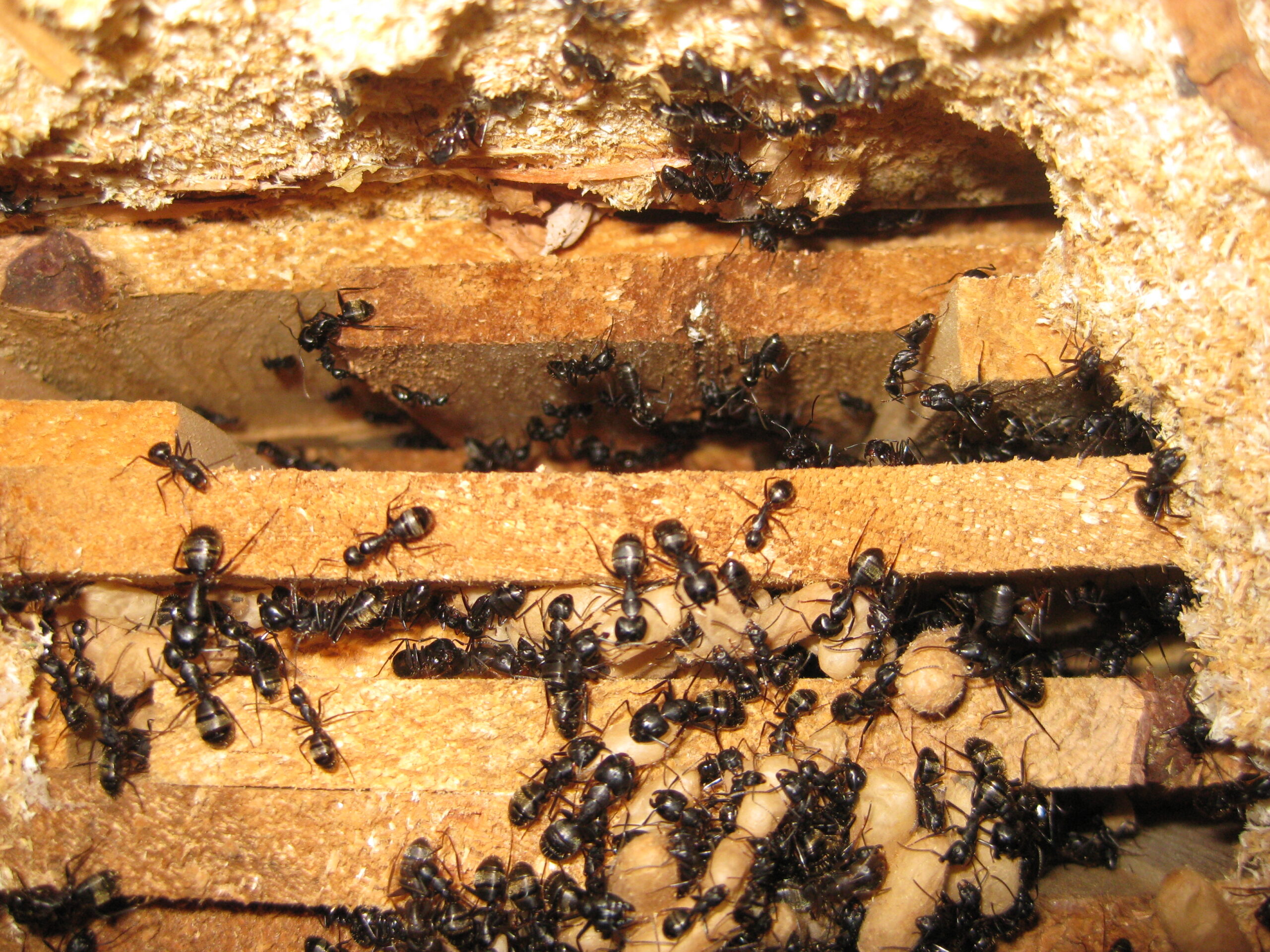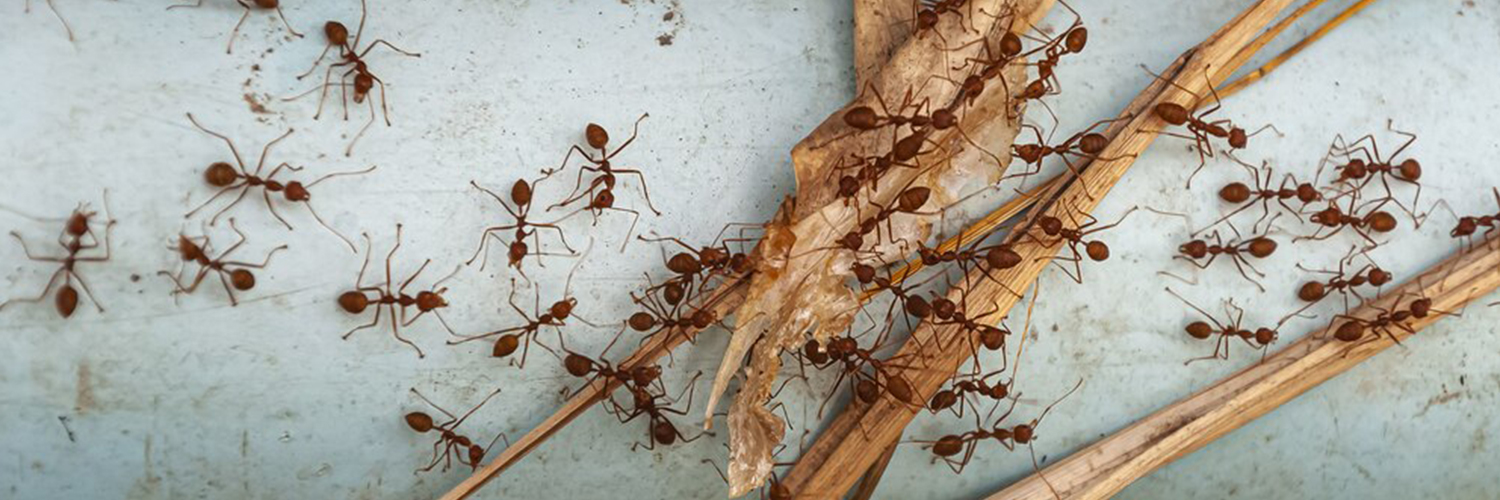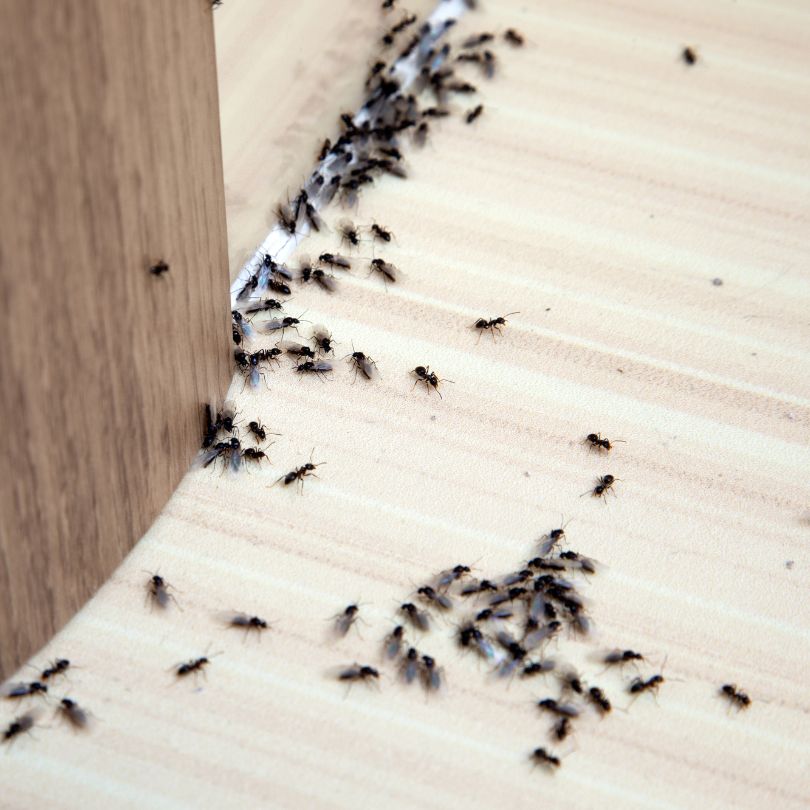Ant Extermination and the Types of Ants in Florida
Serving Saint Petersburg, Pinellas Park, Bay Pines, Seminole, and Indian Rocks Beach
Florida’s mild winters, abundant sunshine, and near-constant humidity create an environment where many pest species can flourish year-round. Among these, ants are some of the most common intruders that homeowners and businesses face. In coastal areas like Saint Petersburg, it is not unusual to spot ants entering through the smallest cracks in walls, windows, or doors, especially when seeking food and water. Over time, a minor ant sighting can escalate into a much larger issue if the underlying colony remains unchecked. Below, you will find an in-depth look at ant extermination in Florida, with insights into the most frequently encountered species in this region, along with strategies for comprehensive control.
Introduction
Ants play important roles in natural ecosystems, helping to aerate soil and decompose organic matter. However, their presence indoors can lead to various problems ranging from food contamination to structural risks if certain species inhabit wooden frameworks. Thanks to Florida’s warm climate, ants can build and maintain colonies uninterrupted by colder weather, often thriving right in residents’ backyards or even beneath home foundations.
In the areas around Saint Petersburg, Pinellas Park, Bay Pines, Seminole, and Indian Rocks Beach, ants can remain active throughout all seasons. Heavy rains often encourage ants to move to higher ground, which can be inside buildings; drier spells prompt them to seek out consistent water sources indoors. Because these insects rely heavily on chemical signaling pheromone trails finding even a small crumb in your kitchen can quickly transform from a few scout ants to a steady line of foragers.
Prompt action is the key to keeping an ant problem from getting out of control. While do-it-yourself sprays and traps might provide temporary relief, they usually only address the ants in plain sight, leaving the hidden colony intact. Effective extermination requires a deeper understanding of ant behavior, colony structure, and the local species that you are most likely to encounter.

Understanding Why Ants Thrive in Florida
Several factors make Florida’s Gulf Coast especially hospitable for ants:
- Warm, Humid Weather
With average temperatures remaining moderate even in winter, ants do not need to enter a dormant phase to survive. This means they can forage, breed, and build colonies year-round. - Frequent Precipitation
Rain can flood ground-level nests, forcing ants to relocate into homes and other buildings. Once indoors, they often discover ideal conditions moisture, food scraps, and fewer natural predators. - Abundant Vegetation
Coastal cities like Saint Petersburg are filled with gardens, trees, and flowering plants that harbor a variety of insects. Ants take advantage of these habitats, nesting in soil, under rocks, or in rotting wood before moving closer to human structures. - Easy Access to Resources
Urban settings provide consistent food sources, from trash bins to pet food bowls. Even small leaks or condensation around pipes can offer water. Ants look for these dependable supplies and establish colonies nearby. - Mild Seasonal Changes
While some parts of the country see drastic temperature swings, Florida’s coastal regions do not undergo lengthy cold snaps. Consequently, ant populations face fewer natural barriers to growth and tend to expand more quickly.
Because of these conditions, ants thrive in both outdoor and indoor settings, quickly becoming a challenge for property owners who are unprepared for their persistence.
Common Ant Species in Florida
Florida hosts numerous ant species, but a handful of them frequently invade residential and commercial properties. If you live in Saint Petersburg, Pinellas Park, Bay Pines, Seminole, or Indian Rocks Beach, you may come across one or more of the following:
- Carpenter Ants
Recognized by their larger size and coloration that can be black or red-and-black, carpenter ants build colonies in damp or decaying wood. They do not consume the wood as termites do, but they hollow it out for nesting. Over time, this can lead to structural complications. Finding stray carpenter ants indoors may indicate an undiscovered nest within walls, attics, or wood damaged by water leaks. - Fire Ants
Fire ants are associated with painful stings and visible mounds that often appear in grassy areas or garden beds. Disturbing a fire ant mound can trigger an aggressive response, causing multiple stings. Beyond posing a threat to people and pets, these ants can damage landscaping and, in some cases, invade electrical units or HVAC systems in search of warmth. - Ghost Ants
Named for their translucent abdomen, ghost ants are small and quick to establish trails toward sugary foods or moist areas. They are adept at setting up multiple nesting sites in one structure. Kitchens, bathrooms, and potted plants are common spots where ghost ants gather. Because of their tiny size, they can slip through very narrow openings. - Argentine Ants
Argentine ants form exceptionally large colonies and are known for massive trails of workers moving between food sources and nesting areas. Their colonies can feature multiple queens, speeding up population growth. They frequently displace other ant species and may invade homes en masse, especially if water sources are more readily available indoors. - White-Footed Ants
These ants have darker bodies with lighter-colored feet (tarsi). They often nest outdoors in trees, shrubs, or mulch. However, if conditions inside a home are favorable, they will migrate indoors. White-footed ants can form large colonies with thousands of workers, making them a challenge to eliminate without a multifaceted plan. - Pharaoh Ants
Extremely small, Pharaoh ants have a yellowish or light brown hue. They thrive in warm, humid locations, which makes Florida ideal territory. Disturbing or partially treating a Pharaoh ant colony can cause it to split—forming multiple new colonies in a phenomenon referred to as “budding.” This behavior makes them one of the more difficult species to control without a carefully designed strategy.
Identifying the specific ant species is critical, as each type has distinct habits and vulnerabilities. Targeted solutions based on the ant’s nesting behavior and food preferences are far more effective than general-purpose sprays or traps.

The Need for Professional Extermination
Although many residents attempt to handle ant problems independently, store-bought remedies often fall short for several reasons:
- Superficial Impact: Sprays kill visible ants but usually do not reach the core of the colony or the queens.
- Colony Splitting: Improper treatments, especially for Pharaoh or ghost ants, can lead to multiple new nests scattered throughout a property.
- Persistent Behavior: Ants can adapt and relocate quickly. If one entry point is blocked, they can find or create another.
- Misidentification: Different species respond to different baits and control methods. Without accurate identification, you may inadvertently choose the wrong product.
Professional teams, on the other hand, carry out thorough inspections to pinpoint colony locations, entry points, and factors drawing ants indoors. They use specialized baits and targeted treatments that aim to eliminate the queen or queens essential for wiping out the source of the infestation. Moreover, they generally offer advice on preventing future problems through maintenance and small structural changes.
Our Approach to Ant Control
- Detailed Inspection
A thorough property evaluation comes first, focusing on indoor and outdoor areas where ants might forage or nest. Inspectors look for telltale trails, moisture issues (such as leaky pipes or roofs), and potential nesting zones in yards, gardens, or under foundations. - Accurate Identification
Correctly identifying the species guides the treatment plan. For instance, tackling ghost ants differs significantly from addressing fire ants or carpenter ants. By matching control methods to the species, it becomes easier to disrupt colony functions. - Customized Treatments
Depending on the ant species, the plan may include gel baits placed along ant trails, liquid treatments around a home’s perimeter, or targeted applications to known mounds or nest sites. A multi-pronged approach ensures coverage of both visible worker ants and hidden members of the colony. - Emphasis on Eco-Awareness
Some property owners prefer methods that focus on minimized impact to the broader environment. Strategically placing baits or treatments where ants are most active can reduce exposure to other insects. This approach allows for efficient ant control while respecting Florida’s diverse ecosystems. - Follow-Up and Prevention
Even after an initial infestation has been addressed, ants remain opportunistic. Proper sealing of cracks, consistent cleaning, and checking the property for new signs of activity can keep them from returning in force. Establishing a follow-up schedule or performing periodic inspections can help sustain a pest-free environment. - Education and Collaboration
Property owners benefit from understanding how ants operate and what preventative measures reduce their access to food and water. Simple actions like storing pantry items in airtight containers, wiping up spills quickly, and trimming branches away from external walls can be surprisingly effective when combined with professional treatment.
Service Areas
These ant control methods are available throughout Saint Petersburg, Pinellas Park, Bay Pines, Seminole, and Indian Rocks Beach. Coastal and suburban communities in this region often face the dual challenge of ants thriving in both landscaped backyards and the hidden cracks or crevices around building exteriors. Warmth from the Gulf waters, combined with seasonal humidity, offers ants year-round opportunities to establish new colonies.
Whether you live close to the waterfront in Indian Rocks Beach or in a more urban setting near downtown Saint Petersburg, proper ant control is crucial to maintaining a comfortable living space. Taking note of local conditions like rainy seasons or hot, dry periods helps refine the timing and scope of treatments for maximum effectiveness. By targeting known nesting areas and potential entry points, it is possible to keep ants at bay in a variety of environments, including single-family homes, condominium complexes, and commercial properties.

Why Choose Us
- Local Experience
Familiarity with Florida’s climate and ant species equips a team to anticipate how ants behave in response to weather shifts and resource availability. Recognizing typical nesting patterns in the Gulf Coast region enables more accurate diagnoses and effective treatments. - Attention to Detail
An ant inspection goes beyond spotting random foragers on a countertop. Effective control requires uncovering hidden nests, identifying how ants enter, and understanding where they find their daily supplies of food and water. - Species-Specific Solutions
A plan tailored for ghost ants won’t necessarily work for carpenter ants, and vice versa. By customizing each treatment to the target species, the likelihood of eliminating entire colonies rather than just visible workers rises substantially. - Commitment to Long-Term Results
Addressing the queen or multiple queens within a colony is paramount. Surface-level fixes simply do not last when new ants continue to hatch. A thorough approach that seeks to undermine the colony at its core fosters a more enduring solution. - Guidance and Support
Proper ant control is partially about prevention. The more a property owner knows about sealing entry points, managing landscaping, and handling food storage, the less welcoming the premises become for ants. Ongoing communication and education help maintain a low-risk environment.
Taking swift action when ants appear is much easier than dealing with the repercussions of an established, sprawling colony. If you notice trails of ants, find yourself facing fire ant mounds in the yard, or suspect that carpenter ants might be tunneling through damp wood, it is wise to explore reliable extermination options.
Contact us to learn more or schedule your service. A detailed evaluation followed by a tailored plan can make a significant difference in resolving ant infestations quickly and effectively. Rather than waging an endless battle with pantry pests or dodging stinging fire ants while mowing the lawn, professional extermination helps reclaim your space and peace of mind.
Ants will always seek out new territory, and Florida’s coastal climate offers them plenty of reasons to stick around. However, an attentive approach that includes regular property checks, proper sanitation, and specialized treatments can keep the situation under control. By removing the resources ants depend on and knocking out their colonies at the core, you can enjoy the benefits of living in Saint Petersburg, Pinellas Park, Bay Pines, Seminole, or Indian Rocks Beach without the persistent nuisance of unwanted six-legged visitors. With the right blend of knowledge, technique, and vigilance, it is entirely possible to safeguard your home or business from the challenges that ants so often present.
